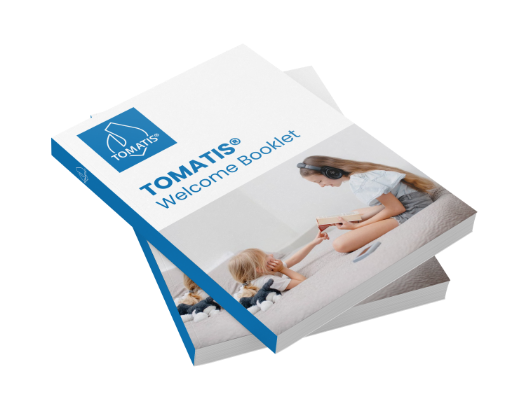The Tomatis® Method – A complementary tool to ASD Therapies
“My child is not responding when I call him.”, “My child does not always look me in the eye.”, “My child is still not saying any words, my child is not pointing to things they want.” Parents often resonate with these behaviours as their autistic children go through developmental stages. This prompts them to embark on their “Google Search Journey” for the best interventions, including occupational therapy, auditory interventions, language development, speech therapy, and more. The question arises: Where does one begin?
Autism, or Autism Spectrum Disorder (ASD), is a neurological and developmental disorder that affects how people interact with others, communicate, learn, and behave. Each year, around 1 in 100 children receive an Autism Spectrum diagnosis [Source: WHO]. ASD can affect various aspects of life, including listening, language, nonverbal communication, and sensory processing that have a significant impact on daily life, leading to anxiety and behavioral difficulties in varying type and severity. Timely detection and professional intervention are vital for individuals with ASD and their families to ensure proper support and care.
Let’s take a closer look at some of the symptoms:

Autism Communication Problems:
- Does not respond to name
- Appearing not to look at or listen to people who are talking
- Lacks shared interests or common hobbies with others
- Fails to recognize when others are hurt or upset
- Does not observe other children or plays with them
- Doesn’t roleplay – doesn’t enact to be a teacher, doctor, superhero etc

Autism Restricted Behaviors
- Repetitive body movements (e.g. rocking, flapping)
- Repetitive motions with objects (e.g. spinning wheels)
- Ritualistic behaviors (e.g. lining up objects)
- Need for a uniform routine (e.g. meal menu)
- Repeats words or phrases over and over (called echolalia)

Other Autism characteristics
- Difficulty with spoken language
- Doesn’t maintain eye contact
- Delayed movement skills
- Delayed cognitive or learning skills
- Gastrointestinal issues
- Atypical emotional responses
- Anxiety, stress, or excessive worry
- Hyperactivity, impulsiveness, and/or inattention
Autism and overlapping conditions
Autism and Auditory Processing Disorder
Auditory processing difficulties are particularly common in those with Autism Spectrum which can hinder their ability to differentiate and process sounds. Auditory processing is one of the most basic skills needed to understand and use speech. These difficulties manifest in challenges such as understanding speech in noisy environments, listening to multiple speakers at once, and following verbal instructions. Even before an autism diagnosis, parents often observe these “auditory hypersensitivities” in their children such as covering ears in loud environments or having meltdowns in grocery stores among others.
In multiple research studies, approximately 65% of parents report that their child with autism exhibits sensitivity to noise [Bishop SL, Hus V, Duncan A 2013]. Smaller studies indicate that up to 93% of individuals with autism show atypical responses to sounds, including difficulties in filtering sounds [Tomchek SD, Dunn W 2007].
Autism and Sensory Processing Disorder
Sensory processing difficulties, including outbursts, tantrum throwing, illegible handwriting, and maladaptive behaviors, are present in approximately 90% of individuals with ASD. Both conditions involve atypical sensory processing, where individuals may experience hypersensitivity or hyposensitivity to various sensory stimuli, such as touch, sound, taste, smell, and visual input. Issues with gross motor skills like shaky limbs, balance, coordination are also common.
Autism and Communication Disorder
ASD impacts communication and social interaction, resulting in challenges related to effective communication, socializing, and displaying restricted or repetitive behaviors. Frequently, they struggle with language development, understanding what is said to them, and nonverbal communication, including gestures, eye contact, and facial expressions.
The Tomatis® Method’s focus on the ear-brain connection leads to improved auditory processing. As auditory processing is enhanced, individuals experience benefits in motor skills (sensory processing), emotional well-being (social communication, aggression) and cognitive abilities (listening, learning, attention etc). This comprehensive approach makes it an effective intervention for its overlapping conditions, ultimately enabling individuals on the autism spectrum to lead more fulfilling and meaningful lives.
In the realm of Autism Spectrum interventions, a wide range of therapies like Occupational Therapy, Physical Therapy, Speech Therapy, Sensory integration therapy, behavioral therapy, floortime therapy, music therapy, and auditory programs are utilized to enhance motor planning, attention, communication, imitation, and play skills in children with Autism Spectrum Disorder.
Among these interventions, the Tomatis® Method, a neurosensory auditory stimulation program, can be used as a complementary tool. It offers a natural and non-intrusive approach that seamlessly integrates with existing therapies for the autism spectrum. The Tomatis® listening program improves a person’s motor skills, emotional balance, listening, language, and communication abilities, thus enhancing their quality of life. With trained and licensed professionals at the helm, this method yields lasting results.
Discover the benefits of the Tomatis® Method for individuals with Autism Spectrum Disorder often observed by therapists and parents*:
Decreased hypersensitivity to sounds
Enables better coping with noise and reduces meltdowns.
Improved connection with the surroundings
Reduces feeling threatened by surrounding sounds.
Decreased temper tantrums
Diminishes temper tantrums and repetitive behavior, leading to increased attention.
Reduced tactile defensiveness
Promotes increased interaction and social engagement by reducing aversion to touch.
Improved receptive and expressive language skills
Leads to increased vocalization and experimentation with speech.
Strengthened appreciation for food,
Boosts acceptance of various textures and tastes, thus, a broader food palate.
Improved self-image and confidence
Strengthened self-image and confidence through connection with one's voice.
Enhanced social skills
This includes seeking contact, following directions, and initiating interactions.
Reduced aggressive behavior
Diminished aggression towards self and others, reducing self-inflicted injuries.
Better eye contact
Increased ability to maintain eye contact and comprehend verbal communication.
Faciltates Communication
Improved listening and sensory integration lay the groundwork for communication.
Improved motor skills
Builds a sensory integration foundation, improving motor skills.
*It’s important to note that the Tomatis® Method is not a substitute for traditional therapy for autism spectrum disorder, but rather it can be added as a complementary approach. The results of the method may vary from person to person and it’s important to consult with a professional who can evaluate and suggest the best approach for your individual needs.
-
What if my autistic child does not like to use headphones?
We have many experienced and trained professionals that can help you or your child accept headphones. If you can still not tolerate wearing headphones do not worry. We have the Tomatis® technology embedded in a bone-conduction kit. So instead of wearing headphones, you wear the device as a belt as a preparation tool. -
My child with Autism gets stressed when it is time to head to a clinic. How do we address this?
We pride ourselves in the flexibility of the Tomatis method and the ability to receive a program in a clinic or in the comfort of your own home. We know schedules are busy and it can be stressful and overwhelming to get to a clinic. Thanks to our at home program you can receive all the benefits of the method in the comfort of your own home on your own schedule that a certified Tomatis® Professional can arrange for you. -
What if my child cannot listen to this program every day or for the said time?
Your Tomatis® practitioner will work with you or your child to develop the most appropriate program for you. The Tomatis method is flexible in that area and listening times can be adjusted to fit your abilities. It’s possible to start listening for 15 minutes a day for your first listening block. Your program can also be adapted to increase your time of listening as you become more comfortable with the program. Listening sessions can be incorporated while your child plays, relaxes or even in conjunction with other therapies. -
My child has non-verbal autism, can you still help?
Yes! Just because your child does not speak does not mean you will not receive benefits from the implementation of a Tomatis program. You can see changes in regulation, listening, eye contact, interaction, and connection. All things that can impact someone who speaks or someone that does not yet speak. -
To what therapeutic modalities can the Tomatis® Method be added to use as a complementary tool for autism?
The Tomatis® Method can be used in conjunction with various treatments and therapies for Autism; Play Therapy, Occupational Therapy, Speech-Language Therapy, Applied Behavior Analysis (ABA), Behavioral management therapy, and Cognitive behavior therapy among many others. Speak with your Tomatis® Practitioner to know more. -
Is the Tomatis® Method a Music Therapy for Autism?
Yes and No. It is not a traditional music therapy that typically involves the use of creating music or playing an instrument. The Tomatis® Method incorporates classical music, such as Mozart, along with patented equipment, specialised parameters, and dedicated headphones. This program is designed to continually stimulate the brain, aiming to trigger attention mechanisms and enhance perception. Through this approach, known as the Tomatis® Method, children can improve their communication skills, develop self-regulation abilities, enhance speech, and reduce sensory overload. -
What is the role of the Tomatis® Method in spectrum therapies?
In multiple studies, the Tomatis® Method has been shown to positively contribute to a variety of areas, some of those being and improve auditory-sensory functions and communication abilities. As a result of the ear’s ability to influence language skills, reading skills, speech, and motor skills, it is not surprising that those who have used the Tomatis® Method have seen improvements in their ability to focus, read and understand, and communicate more effectively.
Start your journey with Tomatis®
To maximize your chances of success with the Tomatis® Method, please follow these steps :
Get your personalized Tomatis® Welcome Booklet
Find the best Practitioner with our interactive Map
Start your Listening Program and transform your Life




